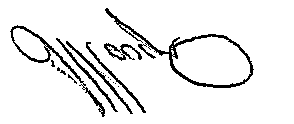

28 May 2021
Jack Whitehead
E-mail:
[FYI request #15016 email]
Dear Jack
Your feedback regarding our response to your OIA in which you have
requested a count of T2-T3 bladder cancers treated with TURBT
(transurethral resection) is acknowledged.
I would like to firstly take the opportunity to apologise to you for what you
perceive as us refusing to provide you with the information you have
requested. Please be assured that this is not the case.
We have continued to work with our Data Quality team to provide the
numbers you have requested. The challenge is that MidCentral DHB
replaced its patient management system in 2017, which requires us having
to manually search our old system, along with data from the Regional
Cancer system.
Our Data Quality team has found that there were 60 TURBTs for 2016 (T2-
T3 bladder cancers). Due to the difficulty in retrieving this information, it
is possible that the number may be more than 60, but we can say with
certainty that it would not be less.
As stated in our response of 12 May 2021; we have spoken to the four
Urologists and can confirm that their response is “100 percent” of T2-T3
bladder cancers were treated with TURBT, as all patients with bladder
cancer are treated with TURBT which would see the full resection of the
bladder cancer, not just a biopsy. In other words, 60 (or more) bladder
cancers were treated with TURBT in 2016.
All patients staged as "probable T2 or T3" (or indeed T1 or T4) on imaging
criteria should routinely undergo resection as part of their diagnosis,
staging and treatment. This is unless they are considered unfit for
anaesthesia or, in exceedingly rare circumstances, where the diagnosis was
obtained by other means (cytology) and the imaging/clinical staging is
considered irrelevant or beyond doubt (a massive high grade tumour
involving the majority of the urothelial surface).
Operations Executive, Acute & Elective Specialist Services
MidCentral District Health Board, PO Box 2056, Palmerston North 4440
Telephone (06) 356 9169

Page 2 of 2
Even in such rare cases, the decision to depart from standard management
(for example; to proceed to cystectomy without prior TURBT) would
almost always have been discussed by an appropriately constituted Uro
Oncology Multidisciplinary team.
Any other information about the number of T2-T3 bladder cancers treated
with TURBT in 2016 cannot be made available without substantial collation
and review, and accordingly cannot be provided pursuant to section 18(f)
of the Official Information Act 1982. We have considered fixing a charge or
extending the timeframe for responding, but do not consider that these
measures would enable any additional information to be provided. You
have the right to complain to the Ombudsman about this decision; please
s
ee https://www.ombudsman.parliament.nz/get-help-public
Please note that this response, or an edited version of this response, may
be published on the MidCentral DHB website 10 working days after your
receipt of this response.
Yours sincerely
Lyn Horgan
Operations Executive
Acute & Elective Specialist Services


